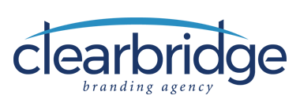Hashtags
How to optimize them on social media. PART 2 of 2.
 In the last edition of the Clearbridge Digital Digest, we learned that hashtags can be tricky, but there are ways to optimize their use for your business on Twitter. In part two, we optimize hashtag use on Instagram and Facebook.
In the last edition of the Clearbridge Digital Digest, we learned that hashtags can be tricky, but there are ways to optimize their use for your business on Twitter. In part two, we optimize hashtag use on Instagram and Facebook.
Instagram allows up to 30 hashtags on each post and 10 hashtags on a story. But that doesn’t mean you want to stuff each post or story with the maximum amount.
Keep in mind that people are reading your posts on a smartphone, so the easier the copy is to read, the more likely they will continue to come back to your posts.
In addition to creating your own hashtag (branded hashtag), just like with Twitter, on Instagram, you can search for relevant and popular hashtags (community hashtag), by reviewing what your competition is using as well as what your audience uses when talking about the same topic.
You can also type your hashtag into the search box and see how many posts have used that same hashtag. This will give you a good idea of its popularity and whether or not you should use it. It may even give you new ideas to use. For example, #yoga is a pretty popular hashtag, but after inputting it into the search box, a list of other yoga-related topics appear, like #yogalife, #yogaeveryday and #yogainspiration. These suggestions will auto-populate after inputting almost any hashtag you want to research.
Facebook: With more space to write posts, hashtags should fit right at home on Facebook. However, many businesses shy away from using them. The reason? Hashtag use on Facebook has not been as widely adopted as on other platforms. Facebook recommends using only one or a few hashtags at most.
We use hashtags on Facebook sparingly when writing copy for our clients. When it feels organic and natural to include it, we will do so. Forcing hashtags into a Facebook post, or any social post, takes away from the tone of the message or conversation.
Searching for hashtags to use on Facebook is pretty similar to Twitter and Instagram. Start typing a #hashtag into the search bar and a list of related hashtags will drop down. Unlike Instagram, it will not tell you how popular the hashtag is. You can choose to see how hashtags are being used by clicking on any of the suggested hashtags in the dropdown and even find related searches, which may be helpful in choosing hashtags to get your post in front of a wider audience.
Hashtags break all the grammar rules. When using them on any platform, remember that punctuation, like commas, exclamation marks, periods and other signs will break up the hashtag, leaving only the letters, words or partial phrase located before the punctuation as the clickable hashtag. An example of a broken hashtag would be #Let’sGoRedWings. The hashtag stops at #Let because of the apostrophe. In this case, write the hashtag #LetsGoRedWings and the entire phrase is now searchable.
The same goes for spacing. Do not leave spaces between words and, if it’s necessary to differentiate between words in your hashtag, use capitalization. For example, #ThrowbackThursday instead of #throwbackthursday.
Just as optimized copy is critical to a well-written post or tweet, determining the proper number of hashtags, as well as knowing what hashtags to use, is just as important. This is especially essential if you are going to utilize a branded hashtag, where it will be used throughout a campaign and where it is encouraged that others use it to communicate with your brand. Research your hashtags before starting any campaign or adding them to any copy.
As originally published on Forbes.com. Clearbridge Branding Agency is a digital marketing agency located in Glassboro. Visit ClearBridgeMedia.com.









